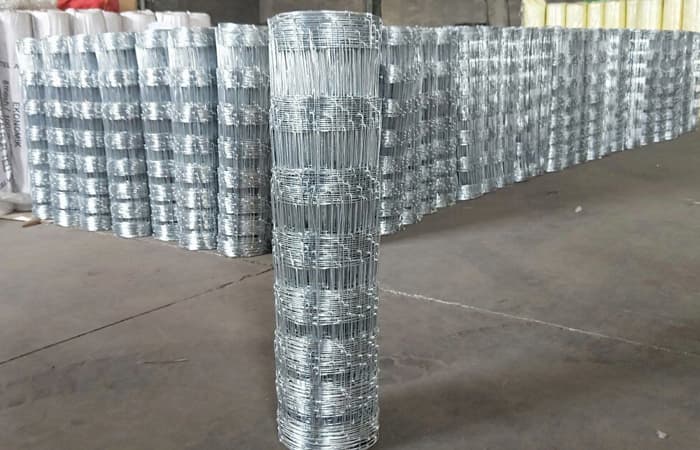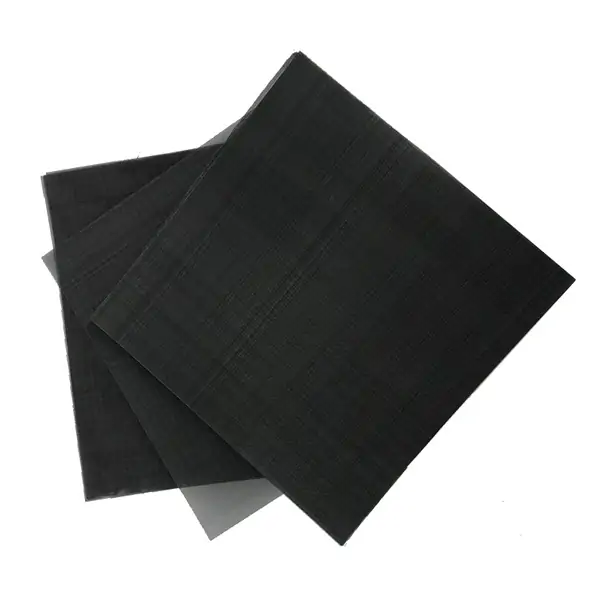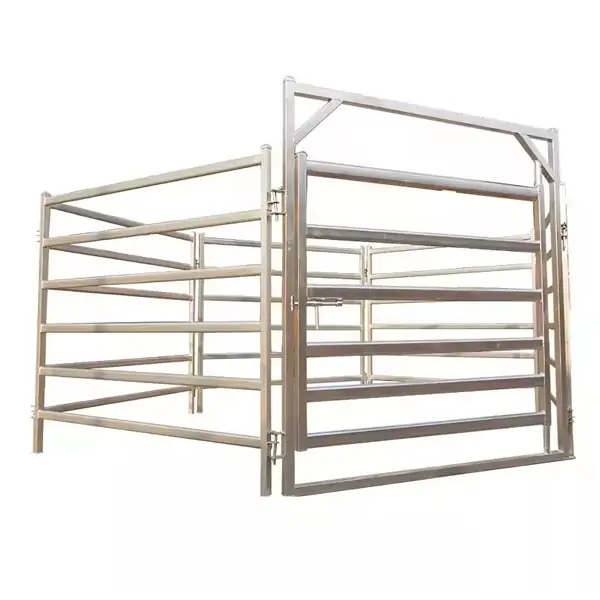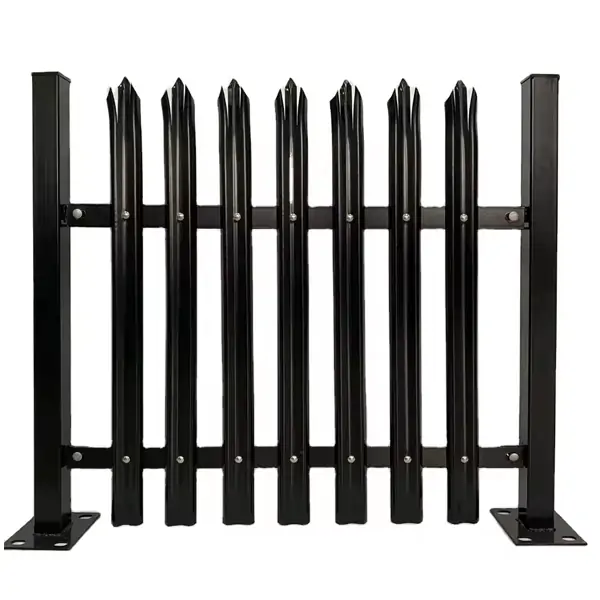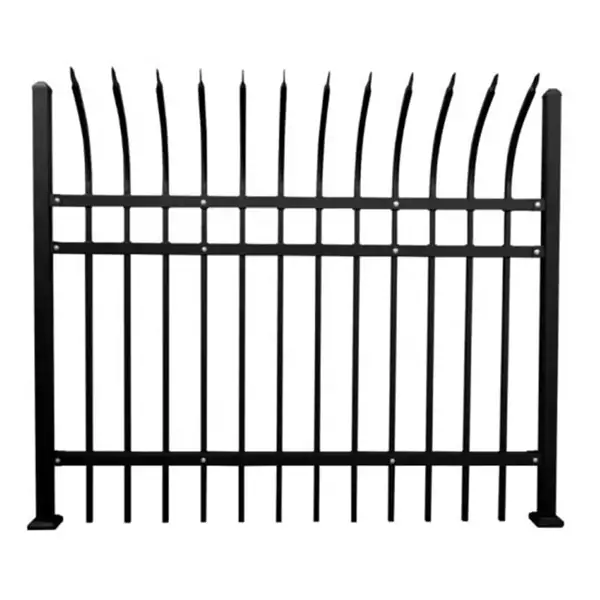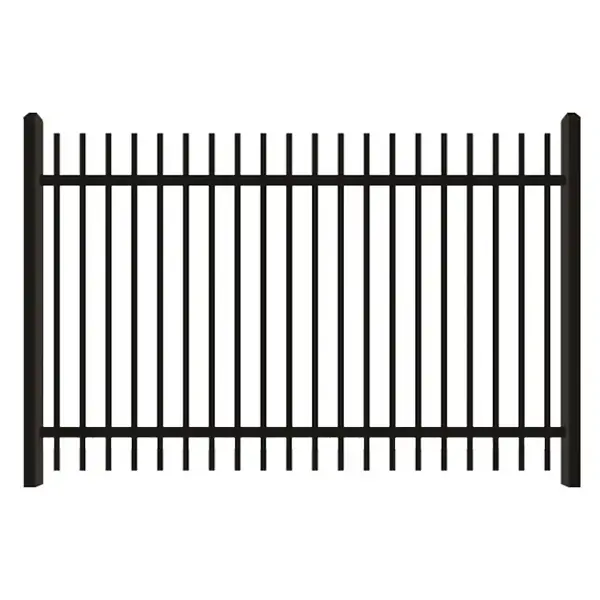Introduction: Importance of Quality Cattle Fencing
Cattle fencing plays a pivotal role in managing livestock and ensuring their safety. Understanding the various types, materials, and maintenance practices of these fences is essential for any rancher or farmer looking to secure their herd effectively.
PS: If you are looking for a cattle fencing company, Anping YESON must be a good choice. Anping YESON has established itself as a top manufacturer of cattle fencing within just 30 years- and a premier manufacturer of wire mesh and fences in China.

Table of Contents
Section 1: Exploring Different Types of Cattle Fencing
Post and Rail Fencing
Post-Fence is known for its blend of aesthetics and resilience. This fencing style consists of horizontal railings attached to vertical wooden posts, creating a secure railing.
The defining characteristics of railway guardrails are their simplicity and sturdiness. Sturdy wooden posts provide stability, while horizontal rails are an effective method of containment. This type of fencing is valued for its ability to effortlessly harmonize with its natural surroundings.
The design versatility of Post and Rail Fencing allows for various configurations, including two, three, or even four-rail setups, depending on the desired level of security and aesthetic preferences. It’s commonly used in agricultural settings, ranches, or properties requiring a boundary demarcation without obstructing views.
Moreover, the inherent strength and longevity of wooden materials used in this fencing type contribute to its reliability. However, maintenance such as periodic inspections, repairs, and protective treatments against weather elements is essential to ensure its durability over time.
Barbed Wire Fencing
Barbed Wire Fencing is renowned for its effectiveness in creating a strong deterrent and protective barrier. This fencing type consists of twisted strands of wire with sharp barbs at regular intervals. Here are some points highlighting its effectiveness and considerations for using barbed wire:
Security and Deterrent:
Barbed wire acts as a formidable deterrent due to its sharp barbs, deterring unauthorized entry and preventing animals from crossing boundaries.
Its intimidating appearance serves as a visible warning to potential intruders, making it an effective security measure for both residential and commercial properties.
Cost-Effective Solution:
It is a cost-effective fencing option compared to other high-security alternatives, making it suitable for large perimeter fencing needs.
The materials required for barbed wire fencing are relatively affordable and readily available.
Versatile Applications:
Barbed wire finds extensive use in agricultural settings, livestock confinement, and protecting crops from wildlife intrusion.
It’s also utilized for securing industrial sites, and construction areas, and to delineate boundaries in rural and remote locations.
Considerations to Keep in Mind:
Local Regulations: Before installation, it’s essential to review regional laws and regulations concerning barbed wire. Certain areas may impose restrictions on its usage or demand specific safety protocols.
Safety Measures: Handling and installation of barbed wire necessitate careful attention to prevent potential harm to humans or animals due to its sharp barbs.
Maintenance Routine: Consistent inspections play a vital role in upholding fence integrity. Timely repairs of any damaged sections are pivotal to sustain security and ensure safety.
Livestock Management Efficiency:
Barbed wire commonly serves as a psychological deterrent in agricultural landscapes, effectively discouraging animals from attempting to breach the fence, thus enhancing livestock control.
Weather Endurance:
When correctly installed and regularly maintained, barbed wire fences exhibit remarkable resilience against diverse weather conditions, ensuring long-term durability and reliability.
Electric Fencing
Electric fencing is a modern and effective method used widely in livestock management, especially for cattle. It operates on the principle of delivering a non-lethal electric shock to deter cattle from breaching the fence. Here’s an explanation of the principles and benefits of electric fencing for cattle:
Principles of Electric Fencing:
Electric Shock System:
An electric fence consists of wires carrying a low-voltage electric pulse generated by an energizer or charger.
When an animal, such as a cattle, comes into contact with the electrified wire, it completes the circuit and receives a short, sharp, and non-harmful electric shock.
Pulsed Energy:
The electric pulse sent through the wires is intermittent, typically delivering a quick pulse of energy every second or so.
This intermittent shock doesn’t cause injury but acts as a strong deterrent for cattle, effectively training them to avoid the fence.
Benefits of Electric Fencing for Cattle:
Enhanced Security and Containment:
Electric fences act as an effective psychological barrier, training cattle to respect the fence boundary.
They provide secure containment without the need for high physical barriers, making them suitable for large areas.
Cost-Efficiency:
Compared to traditional fencing, electric fencing proves more cost-effective due to reduced material and labor requirements during installation. Its adaptable nature permits flexible configurations aligned with terrain variations or grazing patterns, culminating in lowered overall expenses.
Simple Installation and Upkeep:
The installation process for electric fences is relatively straightforward, offering easy modification or expansion options based on necessity. Routine maintenance primarily involves periodic inspections of the energizer and wires to detect faults or vegetation interference, ensuring hassle-free upkeep.
Safe and Humane Deterrent:
The electric shock delivered is designed to startle rather than harm, making it a safe and humane deterrent.
It teaches cattle to respect the boundaries without causing lasting harm or injury.
Versatile Applications:
Electric fencing is adaptable for various terrains and can be used in rotational grazing systems, pasture management, and temporary enclosures.
In summary, electric fencing offers a safe, efficient, and cost-effective solution for cattle management, providing secure containment while minimizing material and installation costs. Its humane and adaptable nature makes it a popular choice among livestock owners for ensuring boundaries and managing grazing areas.
Mesh and Netting
Mesh fencing offers versatile applications in cattle management due to its adaptability, durability, and various design options. Here’s a discussion on the versatility and applications of mesh fencing for cattle:
The versatility of Mesh Fencing:
Different Mesh Sizes and Materials:
Mesh fencing is available in various mesh sizes and materials, including woven wire, chain link, and welded wire, allowing for customization based on specific needs.
Flexibility and Adaptability:
Its flexibility enables installation on uneven terrain or irregular landscapes, offering adaptability for different grazing areas.
Mesh fencing can be easily adjusted or moved to create temporary enclosures or rotational grazing systems.
Strength and Durability:
Depending on the material used, mesh fencing offers durability and strength suitable for containing cattle and resisting pressure from large livestock.
Applications of Mesh Fencing for Cattle:
Security and Containment:
Mesh fencing is a secure boundary to contain cattle within designated areas, preventing them from straying or accessing restricted zones.
It can be used as perimeter fencing around pastures, barns, or feedlots to enhance security and prevent potential threats.
Predator Protection:
Mesh fencing with smaller openings protects predators, serving as a barrier to keep out unwanted animals or predators threatening the cattle.
Separation and Division:
Mesh fencing allows for the division of pasture areas, facilitating rotational grazing or segregating cattle based on age groups or health requirements.
Support for Climbing Plants or Vines:
Certain mesh designs support climbing plants or vines, making them useful for creating natural barriers or windbreaks in grazing areas.
Temporary Enclosures or Corrals:
Mesh fencing’s portability and ease of installation make it suitable for creating temporary enclosures or corrals during cattle handling, sorting, or medical treatments.
Facilitating Airflow and Visibility:
Certain mesh designs permit better airflow and visibility, ensuring adequate ventilation and visibility within enclosures.
Section 2: Materials Used in Cattle Fencing
Wooden Fencing Materials
Pros of Wooden Fencing:
Aesthetic Appeal: Wood presents a natural and rustic appearance that enriches property aesthetics.
Versatility: Easily customizable, it can be stained or painted to complement diverse architectural styles.
Privacy: Solid wooden fences offer seclusion, acting as a barrier to outside visibility.
Environmental Sustainability: As a renewable resource, wood stands as an eco-friendly fencing option.
Property Enhancement: Well-maintained wooden fences have the potential to elevate property value and enhance curb appeal.
Cons of Wooden Fencing:
Maintenance Requirements: Wood requires regular maintenance, including staining, sealing, and repairs to prevent rot, decay, or insect damage.
Durability Concerns: Compared to some other materials, wood may be susceptible to weathering, warping, or rotting over time.
Cost: Initial installation costs for wooden fences can be higher, and ongoing maintenance adds to the long-term expenses.
Prone to Pests: Without proper care, wooden fences are susceptible to termite or pest infestations.
Limited Lifespan: Wooden fences may have a shorter lifespan compared to some alternative materials, necessitating replacements sooner.
Metal Fencing Materials
Durability of Metal Fencing:
Metal fencing materials are renowned for their durability, providing long-lasting solutions for property enclosures. Their resilience against weather elements, pests, and wear ensures extended lifespans, requiring minimal maintenance compared to other materials.
Different Metal Options in Fencing:
Steel Fencing:
Strength and Sturdiness: Steel fences are robust, offering high strength and durability.
Variety of Styles: Available in various designs, from ornamental to industrial, catering to diverse aesthetic preferences.
Resistance to Corrosion: Powder coating or galvanization enhances steel’s resistance to rust and corrosion.
Aluminum Fencing:
Lightweight and Rust-Resistant: Aluminum is lightweight yet durable, and its natural oxide layer prevents corrosion.
Low Maintenance: Requires minimal upkeep due to its resistance to rust and rot.
Versatile Designs: Offers flexibility in design and style choices, suitable for various landscapes.
Wrought Iron Fencing:
Elegance and Timeless Appeal: Known for its intricate designs and elegant appearance, enhancing property aesthetics.
Strength and Longevity: Wrought iron is durable and sturdy, providing excellent security.
Chain Link Fencing (Galvanized Steel):
Affordability and Security: Chain link fences made from galvanized steel offer a cost-effective yet secure option.
Low Maintenance: Requires minimal maintenance and provides visibility while serving as a protective barrier.
Copper and Brass Fencing (Less Common):
Unique Appearance: These metals offer distinctive aesthetics and develop a natural patina over time.
High Cost and Limited Availability: Less commonly used due to higher costs and limited availability.
Synthetic Materials
Advantages of Synthetic Materials in Cattle Fencing:
Durability and Longevity:
Synthetic materials, such as vinyl or composite materials, exhibit high durability, standing up well to weather elements, rot, and insect damage.
They offer longevity and require minimal maintenance compared to traditional materials like wood.
Low Maintenance Attributes:
Synthetic materials typically demand minimal maintenance, conserving both time and resources for owners.
Their inherent resistance to rot, mold, and insect infestations eradicates the necessity for frequent repairs or treatments, ensuring prolonged durability without regular upkeep.
Versatility in Design:
Synthetic materials can be manufactured in various styles, colors, and textures, providing flexibility in design choices.
This versatility allows for customization to match specific aesthetic preferences.
Ease of Installation:
Synthetic fencing’s lightweight nature simplifies installation procedures, allowing for a swift and uncomplicated setup.
Additionally, their uniformity and pre-fabricated components streamline the installation process, offering convenience compared to alternative materials.
Safety and Animal Well-Being:
Synthetic materials boast smooth surfaces devoid of protruding nails or splinters, significantly reducing the potential for cattle injuries.
Furthermore, these materials present fewer ingestion risks, prioritizing animal safety and well-being.
Weather Resistance:
Synthetic materials withstand harsh weather conditions, including extreme temperatures, moisture, and UV rays, ensuring prolonged durability.
Suitability for Cattle Fencing:
Security and Containment:
Synthetic materials offer secure containment, preventing cattle from breaching boundaries due to their durability and strength.
Low Maintenance Needs:
For cattle owners, the low-maintenance nature of synthetic fences reduces the time and effort required for upkeep, making it a convenient choice.
Safety Considerations:
Smooth surfaces and lack of sharp edges in synthetic materials contribute to enhanced safety for cattle, reducing the risk of injuries.
Long-Term Cost Efficiency:
While the initial investment might be higher, the longevity and reduced maintenance costs of synthetic fencing materials can prove cost-effective in the long run.
Section 3: Maintenance Tips for Longevity
Regular Inspections
Early Detection of Issues:
Regular inspections enable the early identification of potential concerns like loose wires, damaged posts, or weakened sections in the fence. Swiftly addressing these issues mitigates further deterioration, significantly lowering the risk of extensive repairs or fence failures.
Preservation of Security:
Timely repairs play a pivotal role in sustaining the fence’s structural integrity, ensuring its reliability as a protective barrier. A well-maintained fence is paramount for safeguarding cattle, averting escape, and shielding them from external threats.
Cost-Efficiency: Proactive inspections and minor repairs are cost-effective in the long run. Addressing small issues prevents them from escalating into more significant problems that would require extensive repairs or complete replacements, saving both time and resources.
Enhanced Longevity: Regular maintenance prolongs the lifespan of the fencing materials. Addressing wear and tear early, prevents premature degradation, preserving the fence’s durability over time.
Vegetation Control
Here’s how vegetation management contributes to fence integrity:
- Preventing Damage: Unchecked vegetation, such as vines, shrubs, or trees, can encroach upon fences, exerting pressure and causing structural damage. This can result in leaning, warping, or even breakage of fence components.
- Reducing Wear and Tear: Overgrown vegetation rubbing against fencing materials can accelerate wear and tear. Continuous friction may weaken the fence, leading to premature deterioration.
- Clearing Line of Sight: Dense vegetation obstructing the fence may compromise its visibility. Clearing vegetation ensures that the fence is easily visible, allowing for routine inspections and timely detection of issues.
- Minimizing Corrosion: In damp environments, vegetation can trap moisture against fencing materials, hastening corrosion or rot. Managing vegetation reduces moisture accumulation, prolonging the lifespan of the fence.
- Preventing Nesting Opportunities: Tall grasses and bushes close to fences can provide nesting spots for rodents or pests, potentially causing damage or burrowing beneath the fence. Vegetation control minimizes such opportunities for pests.
- Facilitating Maintenance: Regular vegetation management allows easier access to the fence for maintenance and repairs. It ensures that fence lines remain accessible, enabling prompt attention to any issues.
Cleaning and Treatment
Cleaning and treating fences are imperative for ensuring their longevity and sustained functionality. Here’s why these actions are crucial:
- Preventing Buildup: Regular cleaning removes dirt, debris, and organic matter that accumulate on fences over time. This buildup, if left unattended, can lead to deterioration, discoloration, and even degradation of materials, impacting the fence’s structural integrity.
- Reducing Corrosion and Rust: Cleaning removes moisture-trapping elements, which are primary contributors to rust and corrosion on metal fences. Treating these surfaces with protective coatings or paint helps to inhibit rust formation, preserving the fence’s durability.
- Preventing Mold and Mildew: Certain climates promote the growth of mold and mildew on fences, especially wooden ones. Regular cleaning and treatment with appropriate sealants or stains inhibit mold and mildew growth, extending the lifespan of the wood.
- Maintaining Appearance: Cleaning and treating fences contribute significantly to their aesthetic appeal. Stains, discoloration, or dirt accumulation can diminish the fence’s visual appeal, while regular maintenance ensures a well-maintained and attractive appearance.
- Enhancing Durability: Treating fences with protective coatings or sealants acts as a barrier against weathering elements. This shielding effect helps to bolster the fence’s resilience against sun exposure, moisture, and other environmental factors.
- Long-Term Cost Savings: Regular maintenance through cleaning and treatment can prevent costly repairs or premature replacements. Investing in maintenance is more cost-effective than dealing with extensive damage due to neglect.
A well-designed and maintained cattle fence is crucial for the safety and containment of livestock. Understanding the diverse types, materials, and proper maintenance practices will aid ranchers in selecting, installing, and preserving efficient cattle fencing solutions.
